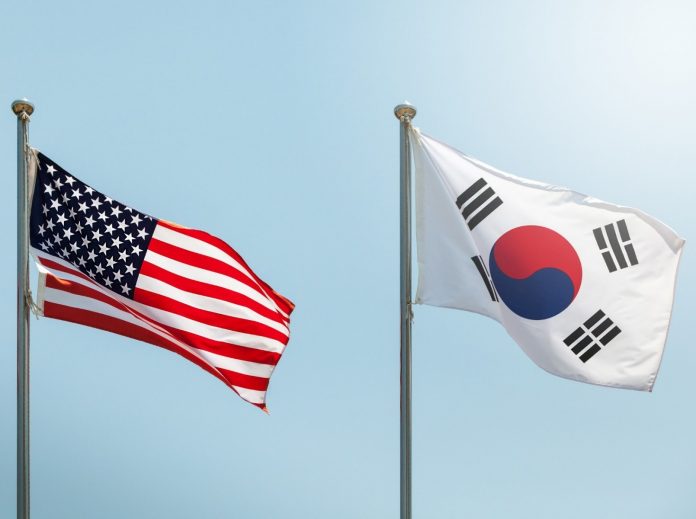Estimates suggest that the economic repercussions of the COVID-19 pandemic on Southeast Asian countries will be even more widespread and long-lasting than either the 1997 Asian or 2008 global financial crises. This makes global partnerships critical to recovery efforts, a diverse panel of experts agreed in a recent East-West Center dialogue on enhancing US-South Korea collaboration in the region.
US-Korea partnership in Southeast Asia helps support economic stability and resilience in the region, they said, particularly in the face of major global challenges like climate change and recovery from the pandemic. With China trying to expand its sphere of influence and the US also seeking closer ties, said a South Korean Foreign Ministry official in opening remarks, “such a delicate balance of power, while posing a dilemma to all the countries involved, also provides ample opportunities for close cooperation between Korea and the US to pursue shared goals.”
Forging new ties
The US-Korea alliance has expanded in recent years and is “built on shared values and a deep, abiding respect for democracy, transparency, freedom and the rule of law,” said Scott Walker, director of the US State Department’s Office of Korean Affairs. Bilateral trade between the two nations reached $156 billion in 2020, while US foreign direct investment in the 10 member countries of the Association of Southeast Asian Nations, or ASEAN, totaled $382.5 billion.
This relationship was further strengthened following a summit between Republic of Korea President Moon Jae-in and US President Joe Biden in May, Walker said, where the two leaders committed to forging new ties on issues like climate change, global health, and supply-chain resilience.
In addition, the 2017 introduction of President Moon’s New Southern Policy, or NSP, was aimed at improving dialogue between Korea and ASEAN member states through collaboration on infrastructure development, education, technology, and public health. “Cooperating with other like-minded partners did not really enter our mind until NSP was launched,” said Eui-hae Cecilia Chung, the Director-General for ASEAN and Southeast Asian Affairs in the Republic of Korea’s Ministry of Foreign Affairs.
The United States also recently entered into the AUKUS trilateral security pact with Australia and the UK, which will help Australia build nuclear-powered submarines for the first time and foster better intelligence sharing between the nations. “I think most countries in the region view US presence in the region as stabilizing,” Walker said.
Building trust
Scot Marciel, former US ambassador to several Southeast Asian nations and now a visiting fellow at Stanford University’s Walter Shorenstein Asia Pacific Research Center, said the US strategic partnership with South Korea is important for building trust in the region, since South Korea is viewed with less suspicion among regional allies. “We can minimize that by being very active in consulting,” he said, “and talking to partners to get their views before we rush ahead.”
Dr. Chiew-Ping Hoo, senior lecturer in the Strategic Studies and International Relations Program at the National University of Malaysia, agreed that, in general, Southeast Asians are “less suspicious” of South Korea compared to other strategic partners like Japan or the US. ASEAN nations “are more willing to accept 5G connectivity and smart city cooperation with Korea,” she said, “so I think that is an entry point for the United States to collaborate with South Korea in the region.”
Pandemic recovery efforts
Enhanced US-Korea collaboration could prove fruitful for Southeast Asian nations still reeling from the effects of the pandemic in areas like trade and tourism, said Chung. “The past two years have been really difficult for all of us, but especially so for our ASEAN partners, many of whom are developing and emerging economies,” she said, adding that a majority of ASEAN countries recorded negative growth in 2020 and experienced steep fiscal deficits, high unemployment rates, and recessions.
The United States has also been a significant partner to Southeast Asia in helping to curb the spread of COVID-19, Walker said, pointing out that it has provided more than 40 million vaccine doses and donated more than $200 million in emergency health and humanitarian assistance to ASEAN members. “We’re also working together to address the most pressing issues—climate change, global health and emerging technologies—all of which carry significant implications for Southeast Asia,” he said.
Collaboration challenges
Enhancing strategic stability in Southeast Asia is not without its challenges, panelists acknowledged, including US-China competition and regional political dynamics. Sang-Yoon Ma, professor of international relations at the Catholic University of Korea and former Director-General for Strategy of the Republic of Korea’s Foreign Ministry, noted that China may anxiously watch regional collaboration, intelligence sharing, and investment with the US. “Given the Chinese anxiety about a coalition of anti-Chinese forces around it, we have to be somewhat cautious,” he said.
Chung cautioned that bilateral cooperation agreements between nations—in particular the US and South Korea—should take broader multilateral frameworks into account when developing strategy. “Bilateral cooperation is well and good…but it needs to plug into configurations and frameworks that already exist in the ASEAN region,” she said.
Source: eurasiareview




